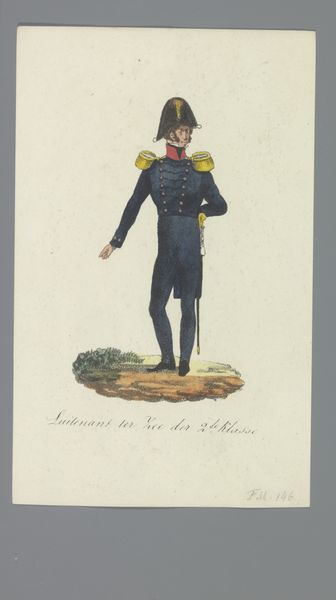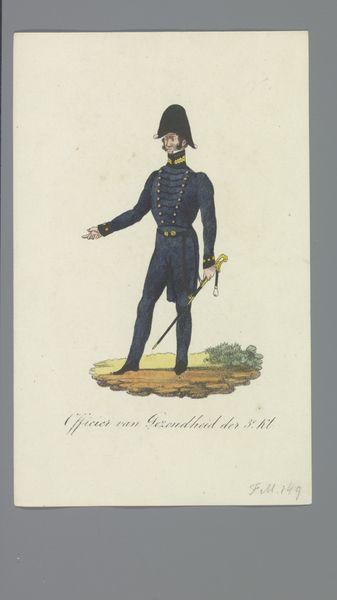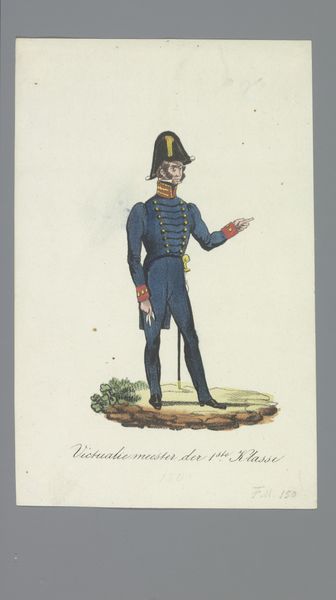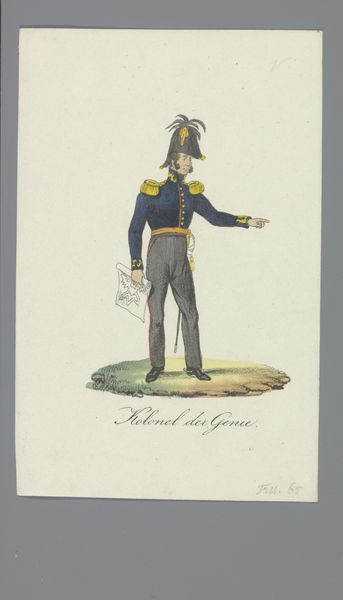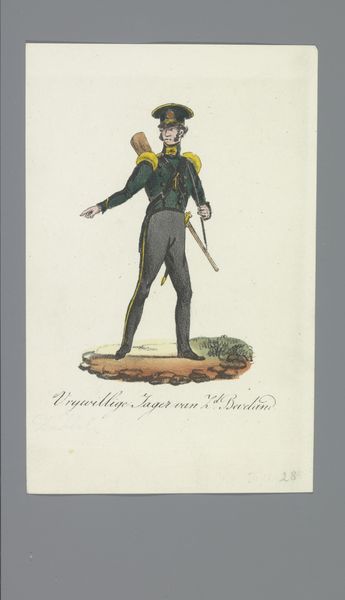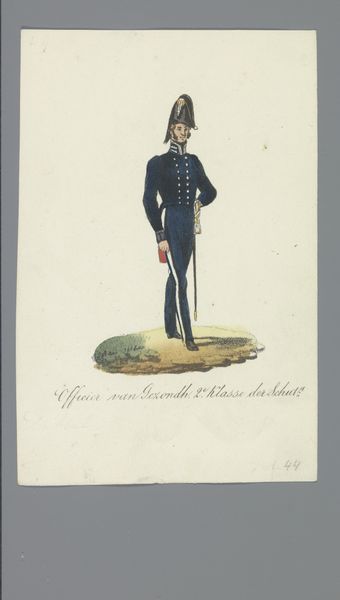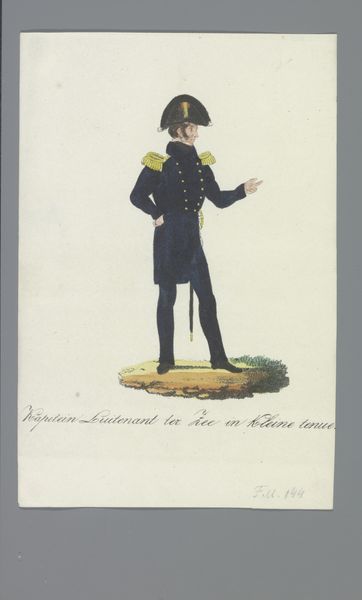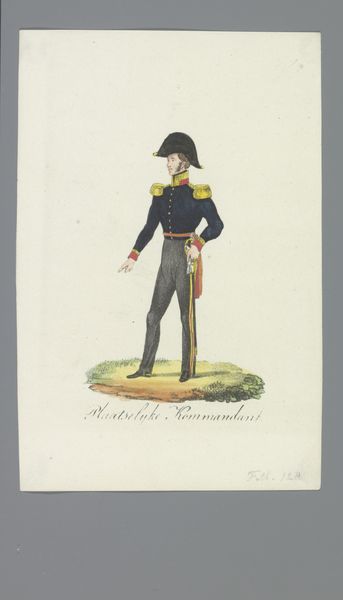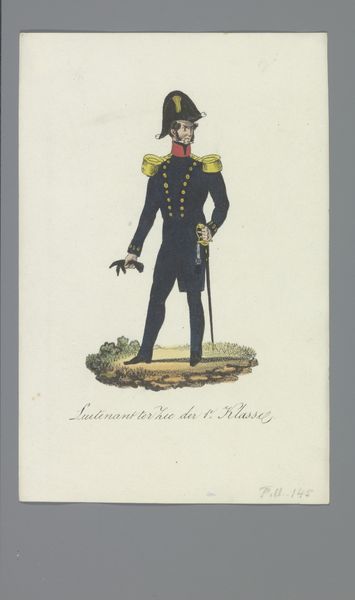
drawing, watercolor
#
portrait
#
drawing
#
watercolor
#
romanticism
#
costume
#
watercolour illustration
#
genre-painting
#
watercolor
Dimensions: height 170 mm, width 110 mm
Copyright: Rijks Museum: Open Domain
Curator: Looking at this work, my initial impression is of controlled authority, a sense of rigid precision in the depiction. Editor: And it is, in many ways, Albertus Verhoesen's watercolor and pen drawing, "Vice Admiraal in kleine tenue," made sometime between 1835 and 1850. What I find fascinating is the material reality of these relatively fragile drawings made to record the pomp of naval authority. Curator: Absolutely, it's that tension between the grand subject matter and the humble materials – watercolour, pen, paper – that's key. Think about the socio-political forces that demanded such documentation, a rising sense of nationalism perhaps. The costume itself, its specific cut and adornment, it speaks to status, and power solidified in material culture. Editor: Exactly. It’s about how uniforms construct identity and communicate social hierarchy, really. The Romantic style in use is really working to communicate those cultural ideals and reinforce the period's accepted structures. Where does one situate "genre painting" here? Is this a romantic portrayal of an actual person, or more of an aspirational, exemplary figure. And think about where images like this circulated! Curator: Well, considering production, were these portraits commissioned? Were they for wide distribution as prints to cultivate national pride? Or were they crafted for more personal use, mementos within a particular social class? I suppose those watercolors are cheaper, and also faster than painting in oil... I guess it shows us a rising "consumer" trend in art... Editor: Perhaps, or possibly it illustrates how an emerging middle class wanted to mimic the traditions, as you mentioned, of "national pride." That’s where it is powerful in how art creates narratives to influence how we identify ourselves within society, past and present. Curator: Ultimately, seeing the "watercolor illustration" provides a useful lens into how artistic mediums were used not only to portray power but to solidify and disseminate the ideals that sustained it. Editor: Indeed, a pertinent point of discussion when examining art through the currents of institutional and public perception, isn’t it?
Comments
No comments
Be the first to comment and join the conversation on the ultimate creative platform.



